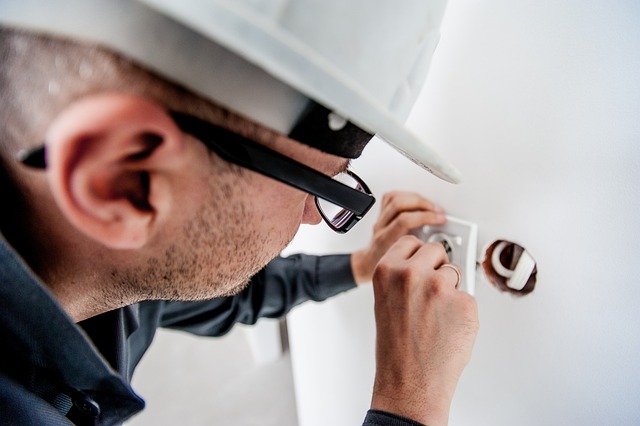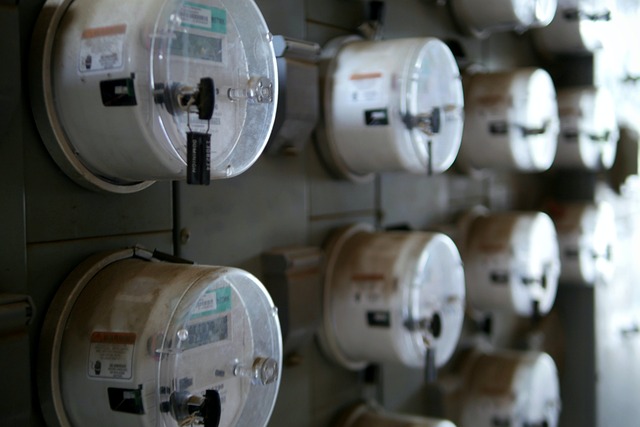Electricians play a vital role in building inspections, ensuring electrical safety and compliance with standards. They identify hazardous wiring, outdated systems, and code violations, collaborating with inspectors to enhance structural integrity and fire safety. By scrutinizing lighting fixtures, power outlets, grounding, ventilation, and more, electricians mitigate risks, upgrade outdated systems, and ensure buildings meet all necessary safety regulations through their expert knowledge and comprehensive assessments.
An electrician plays a vital role in ensuring building safety through code compliance inspections. These professionals are equipped to identify potential hazards and navigate complex electrical systems, making them essential during construction or renovation projects. This article delves into the critical aspects of building inspections, including key areas for evaluation, strategies to mitigate risks, and best practices that electricians employ for comprehensive safety assessments. Understanding these processes enhances overall structural integrity.
- Understanding the Role of an Electrician in Building Inspections
- Key Areas to Inspect for Code Compliance
- Identifying and Mitigating Safety Risks During Inspections
- Best Practices for Comprehensive Building Safety Assessments
Understanding the Role of an Electrician in Building Inspections

During building inspections, electricians play a pivotal role in ensuring electrical safety and code compliance. They are trained to identify issues related to wiring, outlets, panels, and other electrical components that might pose potential hazards. An electrician’s expertise is crucial for detecting outdated or faulty wiring, improperly installed fixtures, or non-compliant circuit breaks, all of which could lead to serious accidents or structural damage.
In addition to safety checks, electricians contribute to the overall integrity of a building by confirming that electrical systems meet local and national standards. They work collaboratively with inspectors to provide valuable insights into electrical systems, ensuring not just compliance but also the longevity and efficiency of the building’s power distribution network.
Key Areas to Inspect for Code Compliance

When conducting a building inspection for code compliance, several key areas require meticulous attention from a qualified electrician. The electrical system is a critical component, as it directly impacts safety and can be a significant risk area. Inspectors should look for outdated wiring, faulty connections, incorrect circuit breaker placement, and any signs of damage or wear. Modernization and upgrades to the electrical panel and wiring are essential to ensure compliance with current safety standards.
Additionally, lighting fixtures, power outlets, and grounded electrical systems must be evaluated. Proper grounding and bonding are vital to prevent electric shock hazards. Other important aspects include checking for adequate fire detection and suppression systems, safe ventilation, and proper use of protective equipment. A thorough inspection by a skilled electrician guarantees that the building meets all necessary safety regulations.
Identifying and Mitigating Safety Risks During Inspections

During building inspections, identifying and mitigating safety risks is paramount. A thorough inspection involves a systematic check for potential hazards, including structural integrity, fire safety, and electrical systems. Electricians play a crucial role in this process by assessing wiring, outlets, and fixtures for any signs of damage or faulty installations. They also verify the presence and functionality of grounding systems and surge protectors, which are vital for protecting occupants from electric shocks and preventing equipment damage.
Mitigating these risks requires addressing non-compliance with building codes. This may involve upgrading outdated electrical systems to meet current standards, installing missing safety devices like smoke detectors and carbon monoxide alarms, or repairing structural defects. By combining the expertise of electricians with a holistic inspection approach, buildings can be made safer for occupants and more resilient against potential hazards.
Best Practices for Comprehensive Building Safety Assessments

When conducting comprehensive building safety assessments, it’s crucial to follow best practices that ensure thoroughness and accuracy. One of the key aspects is engaging the services of a qualified electrician. An electrician can identify potential electrical hazards, outdated wiring, and code violations that may pose significant risks. They play a vital role in ensuring the safety of the structure and its occupants by conducting meticulous inspections and offering expert advice on necessary upgrades or repairs.
Additionally, these assessments should encompass a multi-faceted approach. This includes visual examinations to spot structural defects, fire hazards, and potential slip/trip dangers. It’s also essential to verify proper ventilation, heating systems, and plumbing functionalities. Regular maintenance records should be reviewed to identify recurring issues and ensure compliance with local building codes and safety standards. Combining the expertise of an electrician with a holistic inspection strategy guarantees a comprehensive evaluation, fostering a safer environment for everyone.
An electrician plays a vital role in ensuring building safety by conducting thorough inspections that identify code violations and potential hazards. By focusing on key areas such as electrical systems, wiring, and safety features, they help mitigate risks and ensure compliance with relevant regulations. Adhering to best practices for comprehensive assessments is essential for electricians to provide accurate reports and recommendations, ultimately fostering a secure environment for occupants and property owners alike.
